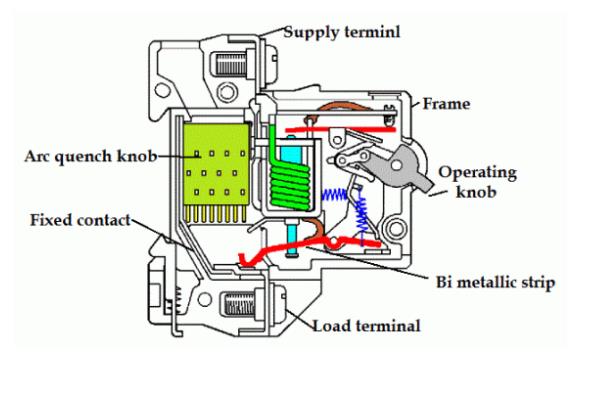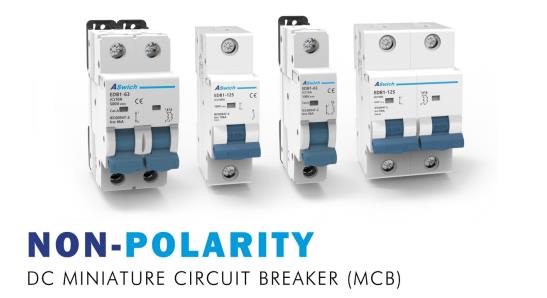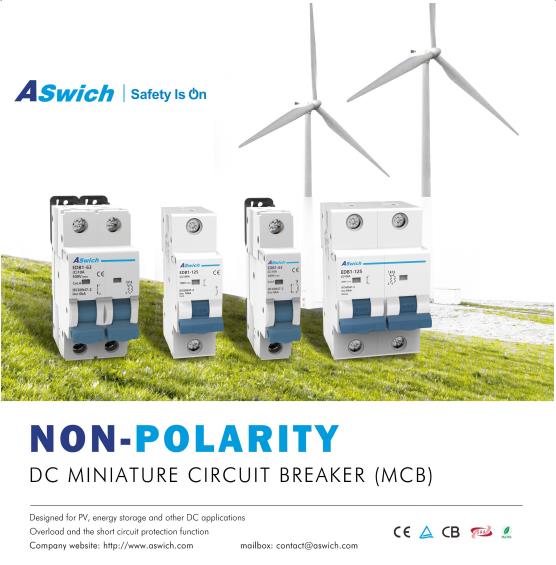What is MCB?
A Miniature Circuit Breaker (MCB) is an automatically operated electrical switch used to protect low voltage electrical circuits from damage caused by excess current from an overload or short circuit.
A MCB works same as a fuse isolator but MCB is still reusable even after interruption of the circuit after an overload or short circuit. Moreover, they are more sensitive to faults than fuses.

Working Principle Miniature Circuit Breaker
A MCB has two arrangements of operations. One due to the thermal effect of over current and other due to electromagnetic effect of over current. The thermal operation of the MCB is achieved with a bimetallic strip whenever continuous overcurrent flows through MCB, the bimetallic strip is heated and deflects by bending. This deflection of the bimetallic strip releases a mechanical latch. As this mechanical latch is attached to the operating mechanism, it causes to open the miniature circuit breaker contacts.
On the other hand, during the short circuit conditions, the sudden rising of current causes electromechanical displacement of plunger associated with tripping coil or solenoid of MCB. The plunger strikes the trip lever causing the immediate release of the latch mechanism consequently open the circuit breaker contacts. This was a simple explanation of the miniature circuit breaker working principle.

What are the benefits of choosing non-polar DC micro-breaks in energy storage systems?
The traditional DC MCB is polarized. The direct current enters from the positive "+" at the upper end of the DC MCB and flows out from the negative "-" at the lower end of the DC MCB, so the circuit can only be protected from one direction. As for the current in the opposite direction, it cannot be effectively broken and cannot be protected. The non-polar DC micro-break (the incoming and outgoing lines do not distinguish between "+"/"-") can realize reverse current protection, thus ensuring the reliable operation of the solar photovoltaic power generation system.
At the same time, for the traditional polarized DC MCB, the positive and negative poles cannot be connected wrongly. Once the positive and negative poles are connected reversely, a short circuit will occur. Power supply short-circuit means that in the circuit, the current does not flow through the consumer, but directly connects the positive and negative poles of the power supply. According to Ohm's law I=U/R, because the resistance of the wire is very small, the current on the circuit will be very large when the power supply is short-circuited. Therefore, in the case of a short circuit, the current in the circuit is very large, which will burn the wires and the power supply. In actual production and life, the short circuit will cause the circuit to malfunction, and even cause serious accidents such as fire.
By changing the distance between the moving and static contacts, the Aswich Non-polarity miniature circuit breaker shortens the arc jumping distance and increases the arcing coil, so that the DC arc enters no matter which of the two directions, can enter the arc extinguishing chamber more smoothly, and cut the arc into small arcs through the arc extinguishing grid, thereby cutting off the fault and providing a higher level of safety guarantee for the energy storage system.
Types and Selection
We have to keep in mind the following terms while choosing an MCB.
1. Polarity or Non-Polarity
For energy storage systems, it is recommended to select non-polar DC micro-break products.
2. Application Field
On the TUV certification, there are two options of the application Field: DC systems and PC system. Since the test standards of DC SYSTEM are much stricter than those of PV SYSTEM, we strongly recommend that you select products that pass the DC SYSTEM test.
ASWICH's Non-polar DC micro-breaks have passed the tests of the DC SYSTEM standard and the PV SYSTEM standard at the same time. Whether you use it in a photovoltaic system or an energy storage system (DC SYSTEM), you can choose ASWICH products with peace of mind.
3. Rated Working Voltage Ue
Select according to the parameters of the energy storage system.
4. Rated Current In
Select according to the parameters of the energy storage system.
5. Rated Short-Circuit Breaking/Interrupting Capacity Icu & Ics
Breaking capacity(Icu & Ics) refers to a special function of the circuit breaker switch. The breaking capacity of a circuit breaker refers to the ability of the circuit breaker to safely cut off the fault current, which is not necessarily related to its rated current. Generally divided into limit breaking capacity Icu and operating breaking capacity Ics. If Icu=6KA, then when a fault current of 6KA occurs in the circuit, the circuit breaker can safely cut off the circuit without contact welding, explosion and other abnormal conditions. Note that the circuit breaker that has undergone extreme breaking is not allowed to be reused (often fails) and must be replaced. Therefore, choosing a circuit breaker with a higher breaking capacity can better protect the energy storage system.
Aswich's non-polar DC micro-break, the breaking capacity is up to 10KA, giving your energy storage system more safety.
6. Triping Curve
Usually choose B curve or C curve, According to the application scenario.
7. Standard
The commonly used international certifications are CE, CB, TUV, SAA and UL, which can be selected according to the regulations of the country where the project is located.
ASWICH non-polar DC micro-break has passed CE, CB, TUV, SAA and UL, and provides safety protection for global energy storage systems.

